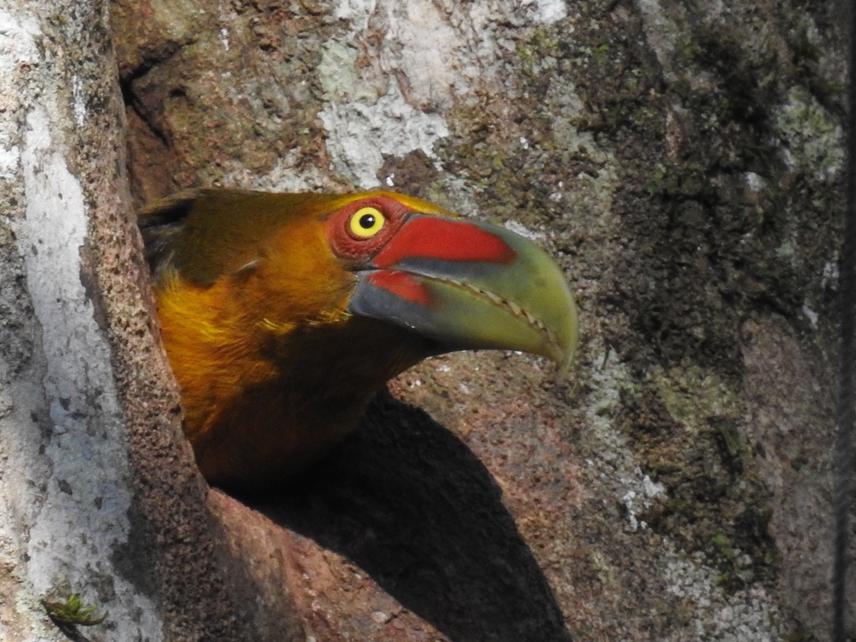Kristina Louise Cockle
Other projects
11 Sep 2003
Status and Conservation of Birds and Large Mammals in Remnant Parana Pine Forest, Misiones, Argentina
Our work will identify critical habitat elements on farms, and encourage farmers to value and conserve them, to prevent extinctions of threatened Parana Pine forest birds.

Saffron Toucanet looking from nest cavity. Photo by V Zulian.
In San Pedro, Argentina, small-holder farmers directly influence the persistence of 22 globally threatened or near-threatened bird species. Unfortunately, these farmers receive very little information about biodiversity to support their management decisions. The birds face capture, loss of their Paraná Pine Atlantic forest habitat, and a dwindling supply of tree cavities, required by endangered Vinaceous Parrots and 68 other bird species for nesting. Vinaceous Parrots, in particular, cannot be preserved in traditional parks in Argentina, and their future depends on conservation of nest trees in rural areas.
We will advance scientific knowledge of how to conserve and restore tree cavities for nesting birds. In particular, we will find out which tree species are most likely to provide long-lasting, high quality nest sites, in the shortest time, by examining the influence of wood properties and tree age on cavity development and persistence. We will also identify key competitors and facilitators of cavities for rare and threatened species in the Parana Pine forest. Our results will allow us to prioritize key tree species, sizes, and conditions (healthy, unhealthy, dead) for preservation and restoration. They will also improve understanding of how cavity nest-sites develop in subtropical forests, and eventually allow us to forecast the availability of tree cavities on farms under different conservation scenarios.
We will advance knowledge about local people’s perceptions of birds and their habitat in the Parana Pine forest, to inform strategies for conservation education. By the end of the project we expect to know how farmers and their children perceive threatened birds and trees, their willingness to conserve these species and their habitat, and the major barriers to conservation from the perspective of local farmers.
With the knowledge gained in our research, we will encourage and help local farmers to conserve threatened species on their farms. Teachers and students at 25 schools and colleges will learn to recognize endangered bird, mammal and tree species present in their localities, gain confidence in their abilities to help conserve these species, and discuss specific strategies for their conservation. Through ongoing outreach campaigns we hope to install a strong conservation ethic, so that farmers and other stakeholders incorporate forest conservation as a core value, empathize with threatened species, and know a variety of ways to conserve them. By educating the public about how forest loss and degradation pose threats to both animals and people, and creating opportunities for small-holder farmers to participate in conservation, we believe we can slow forest degradation and protect habitat for Vinaceous Parrots and other endangered birds.